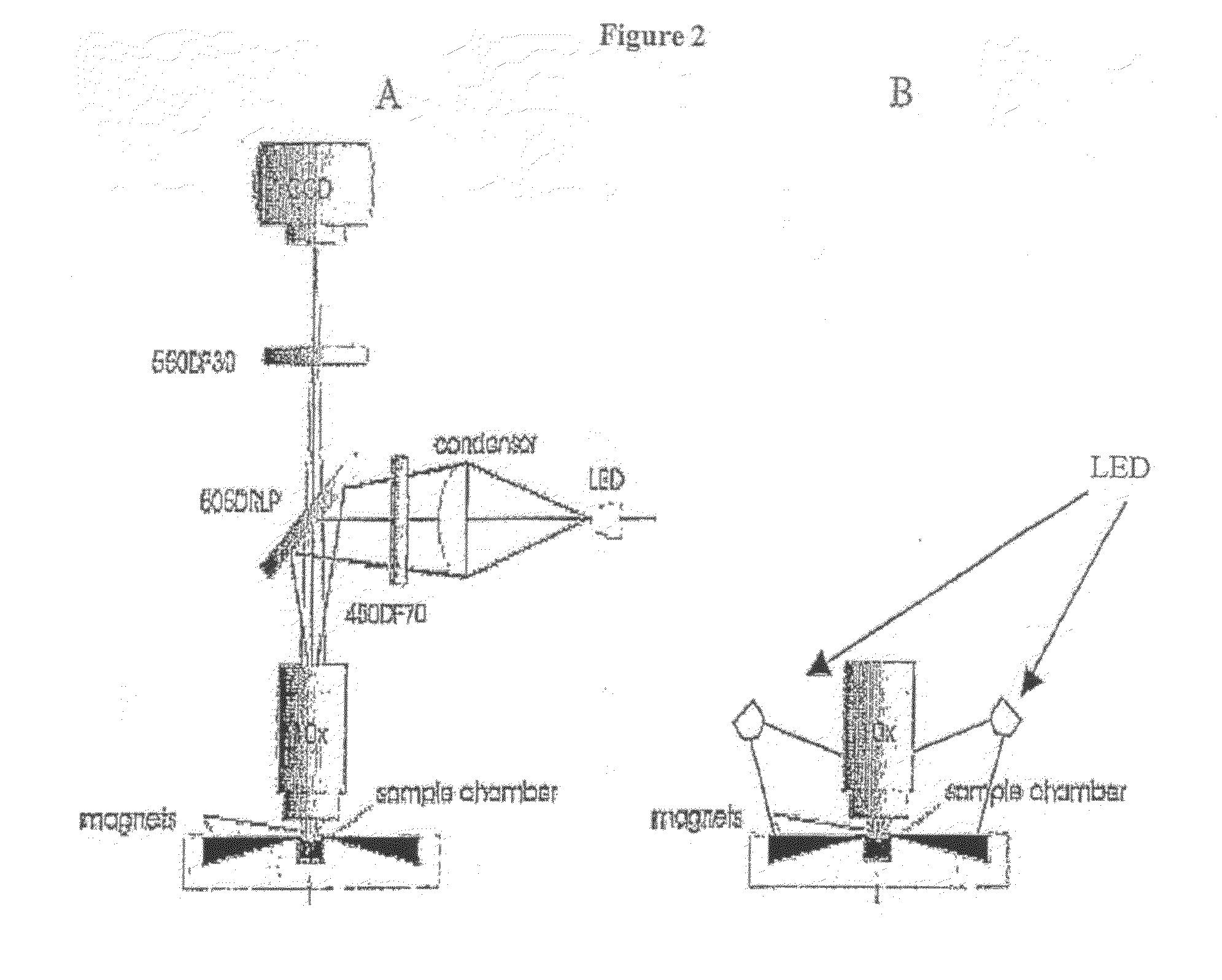Rapid, semi-automated method to detect respiratory virus infected cells in direct specimens
- Summary
- Abstract
- Description
- Claims
- Application Information
AI Technical Summary
Benefits of technology
Problems solved by technology
Method used
Image
Examples
example 1
Detection of Virus-Infected Cells Using Rare Cell Analysis
[0041]Objective; We studied an adapted cell detection technology, originally developed to detect ultra-rare tumor cells in circulation, to capture and detect virus-infected cells present in various cell culture systems and patient NP samples.
Relevance: Clinical diagnosis of viral infection often involves direct specimen analysis using Direct Fluorescent Antibody (DFA) followed by virus culture in susceptible cell lines. DFA is faster but is labor intensive, provides a subjective result and is not as sensitive as culture or molecular methods that may require 6 to 48 hrs for a result.
Methodology: Virus culture was done using standard methods using A549, Mink Lung, SKBr-3, and RMix (DHI) as susceptible host cell lines. Ferrofluids (FF) were prepared as colloidal suspensions of 200 nM magnetic particles coated with antibodies to specific antigen targets on cells. Suspensions of cells were fixed with cell fixative solution, washed...
example 2
Feasibility Study of a Rapid, Semi-Automated Method to Detect Respiratory Virus Infected Cells in Direct Specimens
[0042]Objective: The objective of this study was to demonstrate that a rapid, liquid specimen processing procedure could readily differentiate positive and negative cell culture in <2 min using EasyCount™, an automated fluorescent microscope with cell counting capability. EasyCount™ uses a CCD camera to visualize counter stained cells for a total cell count and interrogates those same cells to identify those that are infected with virus by detecting fluorescein.
Methods: We chose R-Mix and Influenza A (Flu) as a prototype cell culture / virus system to simulate a direct specimen scenario for automated detection purposes. Flu virus was inoculated in duplicate onto 24-well R-Mix plates, centrifuged at 700×g for 60 min, and incubated at 37° C. for 20 hr. One plate was fixed, stained and counted to confirm the viral input. The cells from the replicate plate were released and ce...
PUM
 Login to View More
Login to View More Abstract
Description
Claims
Application Information
 Login to View More
Login to View More - R&D
- Intellectual Property
- Life Sciences
- Materials
- Tech Scout
- Unparalleled Data Quality
- Higher Quality Content
- 60% Fewer Hallucinations
Browse by: Latest US Patents, China's latest patents, Technical Efficacy Thesaurus, Application Domain, Technology Topic, Popular Technical Reports.
© 2025 PatSnap. All rights reserved.Legal|Privacy policy|Modern Slavery Act Transparency Statement|Sitemap|About US| Contact US: help@patsnap.com



